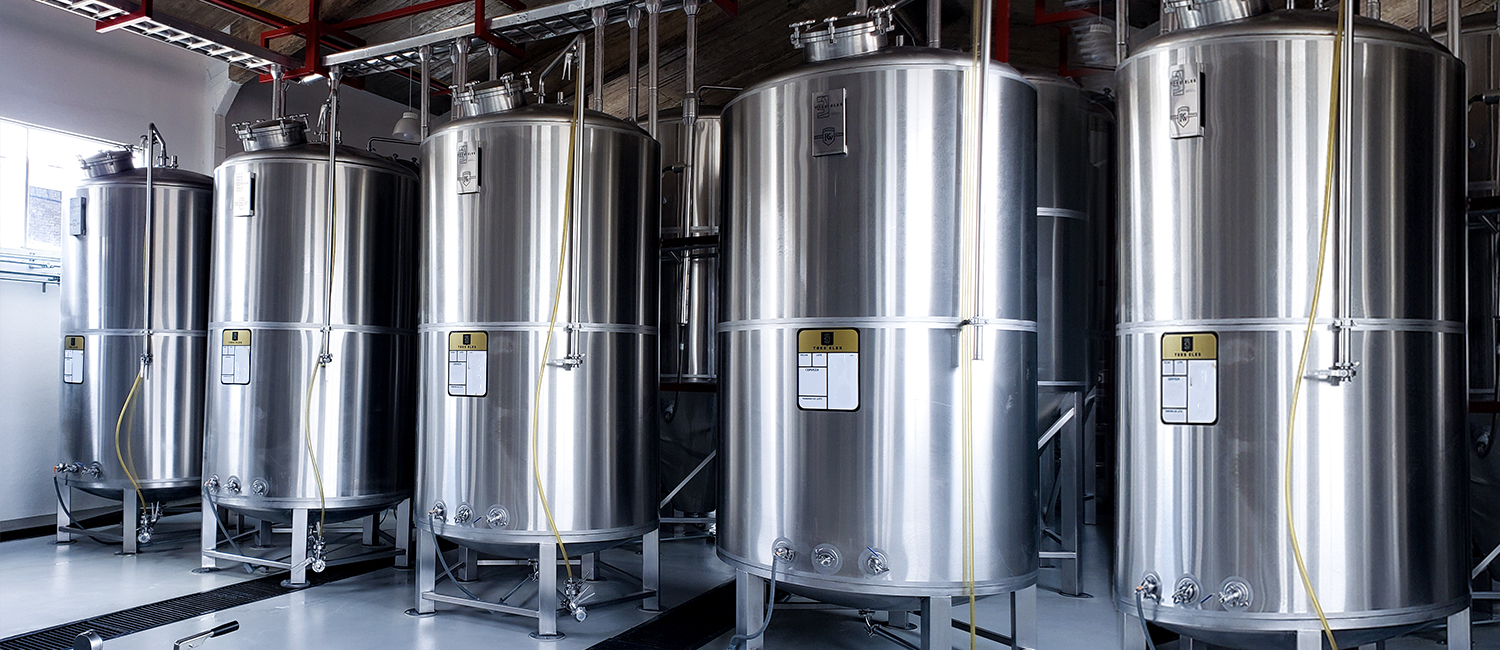The Role of Stainless Steel Mixing Tanks in Food and Beverage Production
Stainless steel mixing tanks are indispensable in the food and beverage production industry. These tanks provide the ideal solution for mixing ingredients, maintaining product consistency, and ensuring safety and hygiene standards. Given the nature of food processing, where the quality and integrity of products are paramount, stainless steel is the material of choice. Its durability, non-reactivity, and easy-to-clean surfaces make it particularly well-suited for the food and beverage industry. In this article, we explore the critical role stainless steel mixing tanks play in food and beverage production.
1. Durability and Corrosion Resistance
Stainless steel’s primary advantage in food and beverage production is its durability and corrosion resistance. Manufacturing processes often involve exposure to acidic, alkaline, or corrosive substances, making stainless steel an ideal material. Whether it’s mixing fruit juices, sauces, dairy products, or alcoholic beverages, stainless steel tanks are designed to withstand these harsh environments without deteriorating over time.
- Grade 304 and 316 Stainless Steel are most commonly used in food and beverage production, providing excellent resistance to rust and staining. Grade 316, in particular, is ideal for high-salinity or acidic applications such as dairy or wine production due to its enhanced corrosion resistance.
2. Maintaining Product Quality and Consistency
In food and beverage production, consistency is key. Stainless steel mixing tanks are equipped with advanced agitation systems that ensure uniform blending of ingredients. Whether the product is a drink, sauce, dough, or even a frozen dessert, consistent mixing ensures that flavors, textures, and colors are uniform across all batches.
- Agitation systems such as top-entry, side-entry, or bottom-entry mixers are designed to accommodate different viscosities and types of ingredients. These systems provide thorough mixing, ensuring that ingredients are properly integrated without causing damage or degradation to the product.
- Homogenization of ingredients is a critical aspect, particularly in emulsions like salad dressings or creams. Stainless steel tanks with the right agitation system allow for the precise blending of fats and liquids to achieve smooth, stable products.
3. Hygiene and Sanitation
Food safety is a top priority in the food and beverage industry. Stainless steel tanks are renowned for their hygiene benefits due to their smooth, non-porous surfaces, which make cleaning easier and more effective. In food production, where contamination can occur if the equipment isn’t properly sanitized, stainless steel offers an advantage over other materials, which may harbor bacteria or particles.
- Sanitary design: Stainless steel mixing tanks are often equipped with features such as CIP (Clean-In-Place) systems, which allow for thorough cleaning of the tank without disassembling it. This is particularly important for food manufacturers who need to meet strict hygiene standards and minimize downtime for maintenance.
- FDA-compliant: Stainless steel tanks used in food production are designed to meet regulatory requirements, including those set by the Food and Drug Administration (FDA). This ensures that the tanks are safe for food contact and do not pose a risk of contamination.
4. Temperature Control
Many food and beverage products require precise temperature control during the mixing process. Stainless steel mixing tanks can be equipped with heating and cooling systems, such as jacketed tanks or external heat exchangers, to maintain the optimal temperature for different processes. Temperature control is crucial in processes like fermentation, pasteurization, and mixing sensitive ingredients.
- Heating jackets are used to maintain high temperatures for processes like melting, cooking, or pasteurizing.
- Cooling jackets help maintain a controlled temperature for fermentation or when mixing temperature-sensitive ingredients.
Maintaining the correct temperature ensures product consistency and quality, preventing overcooking or spoilage while allowing for optimal mixing results.
5. Scalability and Flexibility
Stainless steel mixing tanks can be easily scaled up or down to accommodate changes in production volume. Whether a company is producing small batches of artisanal products or large-scale quantities of beverages or sauces, stainless steel tanks can be customized to meet specific production needs.
- Modular designs and various tank sizes allow for flexibility in manufacturing processes, which is particularly beneficial for growing businesses.
- Additionally, stainless steel mixing tanks can be integrated with automation systems for monitoring and controlling batch size, mixing time, temperature, and other parameters. This is particularly helpful for companies that wish to scale production efficiently while maintaining consistent product quality.
6. Versatility in Applications
Stainless steel mixing tanks are incredibly versatile and can be used for a wide range of applications in the food and beverage industry. They are used in the production of everything from beverages, sauces, soups, and dairy products to processed meats and baked goods. Some common uses include:
- Beverage production: Mixing, fermenting, and blending various ingredients for soft drinks, alcoholic beverages (such as beer or wine), and dairy drinks.
- Sauce and soup production: Combining various ingredients like vegetables, herbs, spices, and oils to create sauces or soups. The precise mixing ability of stainless steel tanks helps to achieve the desired texture and flavor consistency.
- Dairy and confectionery: In the production of ice cream, yogurt, and other dairy products, stainless steel tanks are used for both mixing and maintaining the right texture and temperature.
- Bakery applications: Mixing dough for bread, pastries, and other bakery products requires careful control over mixing time, temperature, and ingredient ratios, which stainless steel tanks facilitate.
7. Easy Integration with Other Equipment
In food and beverage production, mixing tanks often need to be part of a larger processing line. Stainless steel mixing tanks can be seamlessly integrated with other equipment such as pumps, filters, conveyors, and packaging machines, providing a continuous flow of production.
- Automation: Many stainless steel mixing tanks are equipped with automation controls that allow operators to monitor and control mixing parameters. This makes it easier to maintain consistent product quality while reducing the risk of human error.
- Connectivity: Some tanks are equipped with sensors and software that can track and analyze various factors such as temperature, pressure, and batch time. This data can be used to optimize production efficiency and product quality.
8. Cost-Effectiveness in the Long Run
While stainless steel mixing tanks may have a higher initial investment compared to other materials, their durability, ease of maintenance, and longevity make them cost-effective in the long term. Stainless steel does not corrode, warp, or degrade over time, reducing the need for frequent replacements or repairs. The ability to clean these tanks quickly and thoroughly also saves time and labor costs.
- Long lifespan: Stainless steel is highly resistant to wear and tear, reducing the frequency of replacements and minimizing maintenance costs.
- Energy efficiency: Many modern stainless steel tanks are designed to be energy-efficient, with insulation and temperature control features that reduce energy consumption.
Conclusion
Stainless steel mixing tanks are a cornerstone in the food and beverage production industry. Their durability, hygiene, versatility, and ability to maintain product quality make them ideal for a wide range of applications, from beverage production to dairy and baked goods. When selecting a stainless steel mixing tank for food production, it is important to consider the size, material grade, mixing system, and temperature control features to ensure that the tank meets the specific needs of the production process. With the right equipment, manufacturers can improve operational efficiency, reduce costs, and consistently deliver high-quality products to the market.






